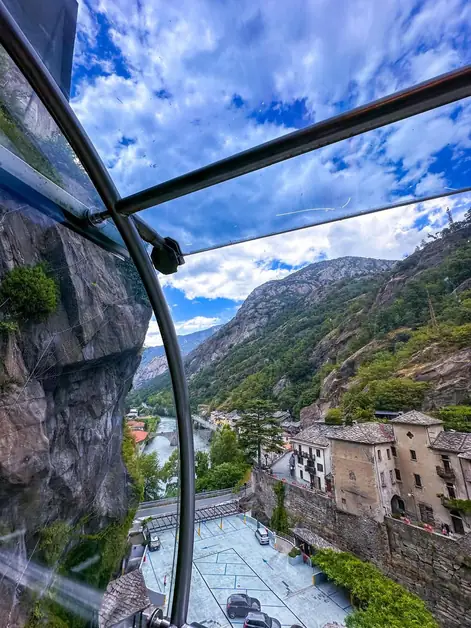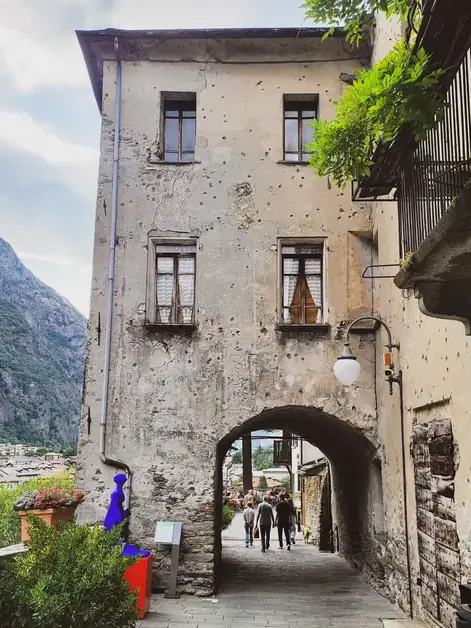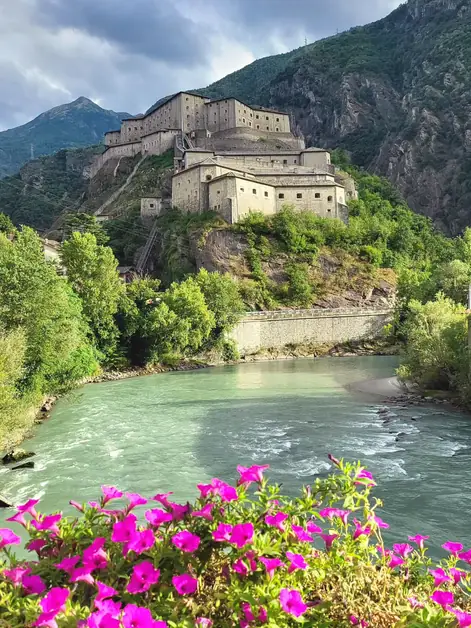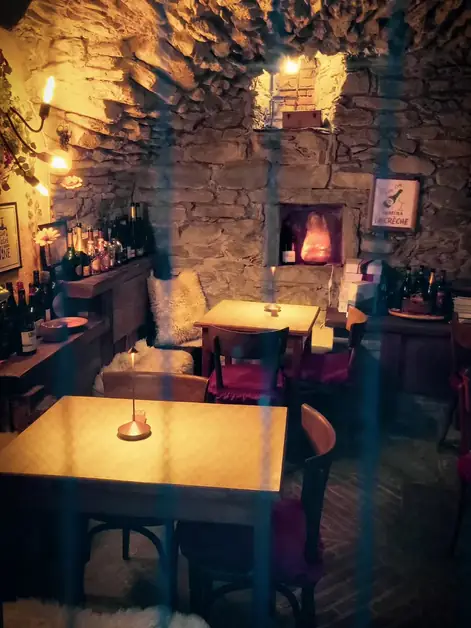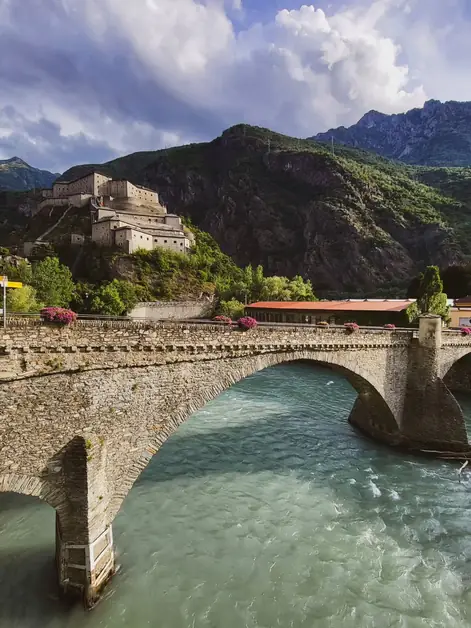Fontina Valle d'Aosta the cheese you must try
Discover Fontina Valle d'Aosta, the DOP cheese you must try.
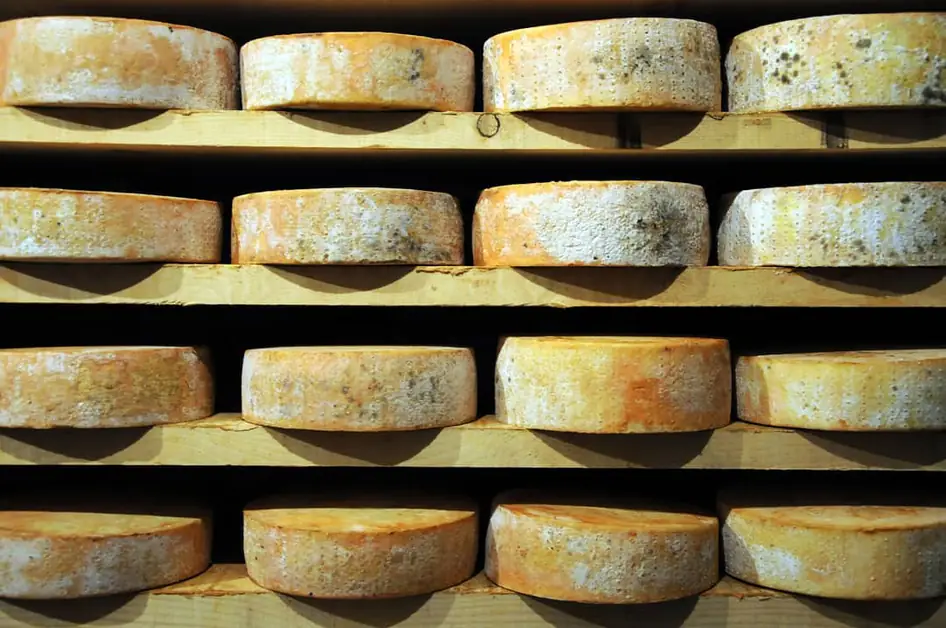
Where does Fontina Valle d’Aosta DOP come from?
Fontina is exclusively produced in Valle d’Aosta, from raw milk of Valdostana breed cows. It is a protected designation of origin (DOP) cheese, representing one of the most typical products of the region. The wheels are produced in the alpine pastures during summer and in cooperative dairies during winter, following ancient techniques passed down through generations.
Where to visit the Fontina Museum in Valpelline?
The Fontina Museum is located in Valpelline, a small village about 15 km from Aosta. It is housed in an ancient building that once served for cheese production and storage. Today, it tells the story of Fontina through original tools, photographs, and multimedia paths.
To get there by car from Aosta, just follow the SS27 of Gran San Bernardo and then turn towards Valpelline. The journey takes about 20 minutes. Parking is available near the museum, and there are generally no difficulties in finding a spot.
By public transport, you can take a bus from Aosta to Valpelline: the rides are frequent, but it’s advisable to check the schedules in advance.
How does the visit to the Fontina aging warehouses in Pré-Saint-Didier work?
The aging warehouses are located in Pré-Saint-Didier, in the lower part of the Monte Bianco valley, a few kilometers from Courmayeur. Here, the Fontina wheels rest for months in large galleries carved into the rock, where humidity and temperature are constant. The guided tour allows you to enter these suggestive environments and discover how the unique flavor of Fontina is born.
To get there by car, just take the A5 motorway until the Morgex exit and follow the signs for Pré-Saint-Didier. Parking is available near the entrance, but in summer months it can be crowded; in that case, it’s advisable to leave the car in municipal parking and walk for a few minutes.
By public transport, you can take a bus from Aosta towards Courmayeur, stopping at Pré-Saint-Didier.
What experiences does the Fontina Museum offer?
The museum path is not only visual but also sensory. You can touch ancient tools, listen to the stories of breeders, and even participate in small guided tastings. The goal is to understand how a simple product like milk transforms into a cheese with an intense flavor.
What do you learn in the Fontina aging warehouses?
During the visit to the warehouses, guides explain the secrets of aging: the daily care of the wheels, brushing, salting, and quality controls. It’s an opportunity to see hundreds of wheels lined up, with the typical aroma enveloping the environments.
How to organize a day between Valpelline and Pré-Saint-Didier?
An interesting idea is to combine a visit to the Fontina Museum in Valpelline with a visit to the aging warehouses in Pré-Saint-Didier. By car, both can be easily reached in a day, crossing very suggestive alpine landscapes.
Those traveling by public transport can plan the day starting from Aosta in the morning, visiting the museum and then taking a bus towards Courmayeur with a stop at Pré-Saint-Didier.
Can you buy Fontina and other local products on-site?
Yes, both in Valpelline and Pré-Saint-Didier, it is possible to buy DOP Fontina directly from the sales points connected to the structures. In addition to aged Fontina, you can find butter, yogurt, and other local cheeses, often made in the cooperatives of Valle d’Aosta.
Are there events related to Fontina in Valle d’Aosta?
Every year, various municipalities organize fairs and festivals dedicated to Fontina and dairy products. One of the most famous is the Sant’Orso Fair in Aosta, where among the craft stands there is always space for typical cheeses. Visiting the museum or the warehouses can be combined with these events for an even richer experience.
How long does the visit to the Fontina Museum and the aging warehouses last?
The visit to the Fontina Museum in Valpelline takes about an hour. The duration at the aging warehouses in Pré-Saint-Didier is similar, but depends on the type of tour chosen. In both cases, the guides share anecdotes and curiosities that enrich the experience.
